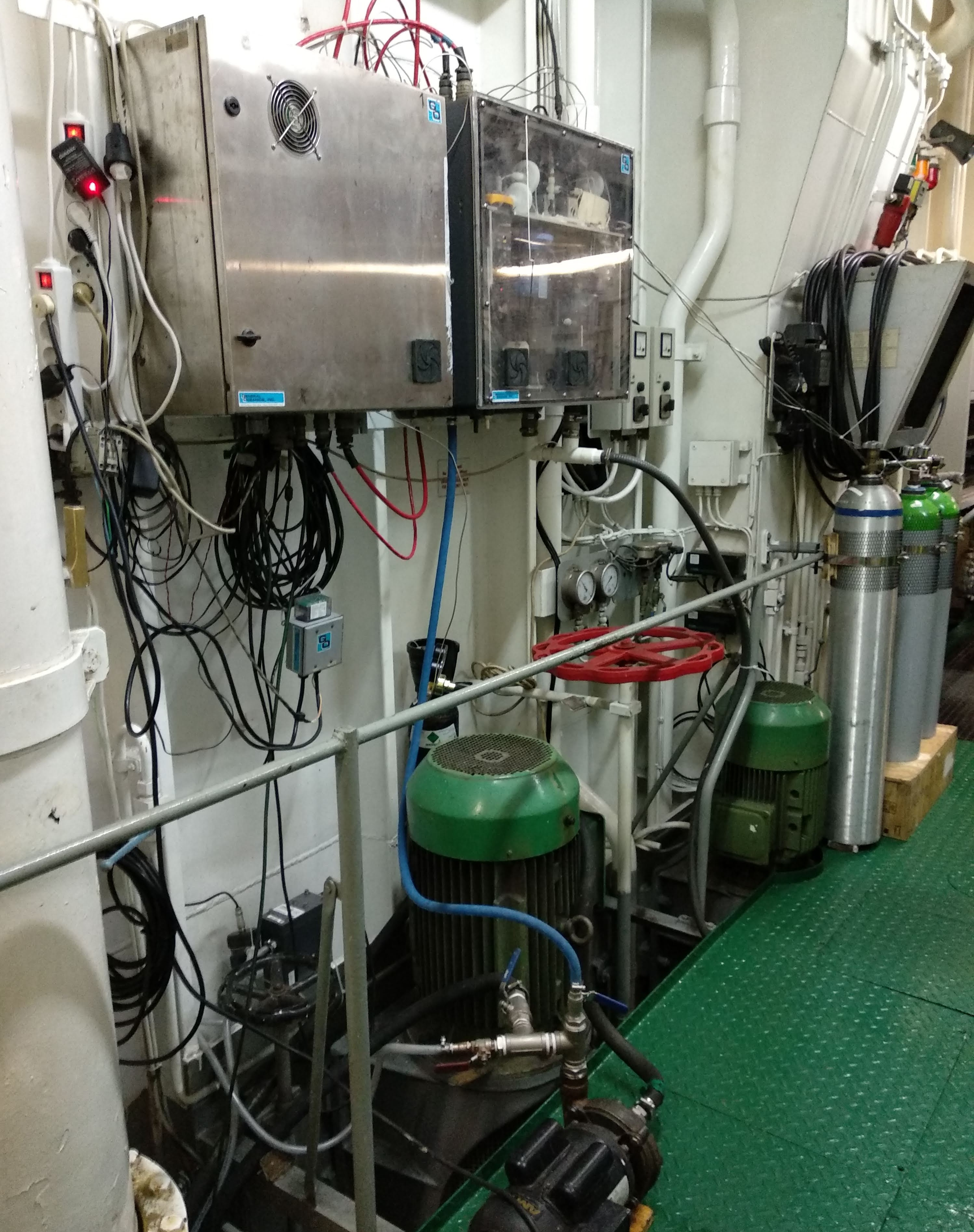The CanOA-VOS line is a surface ocean observation platform (SOOP) installed on a bank of opportunities (VOS) that links the Canary Islands with Barcelona using a container ship. The transect which makes stops at the ports of Gran Canaria (Puerto de La Luz y Las Palmas), Tenerife, Lanzarote, then returns to the ports of Sagundo (Valencia) and Barcelona. In this way, the CanOA line travels each week through the eastern region of the Canary Islands, crosses the North African region towards the Strait of Gibraltar, and from there to Barcelona via the western part to the Mediterranean Sea, making the return transect to the Canary Islands the following week. This allows continuous recording of data from the region with a frequency of one week. The container ship where the equipment is installed is the MV RENATE P of the company REEDEREI STEFAN PATJENS GmbH & Co.KG managed in Spain by NISA MARITINA. In November 2021, the container ship changes its name to MV JONA SOPHIE.
The CanOA-VOS line was designed and is maintained by the QUIMA Group of the Institute of Oceanography and Global Change of the University of Las Palmas de Gran Canaria. It is funded by the CanBIO Project, a Public-Private project between the Gobierno de Canarias through the Consejería de Transición Ecológica and the Fundación Loro Parque and by the CARBOCAN project of the Consejería de Transición Ecológica, Lucha contra el Cambio Climático y Planificación Territorial of the Gobierno de Canarias for the creatoin of an ocean carbon dioxide observation network in the Canary Islands. It was established in February 2019 and since January 2021 it is one of the ICOS ocean stations. The measuring equipment installed in the ship's engine room is a General Oceanics PCO2 model 8050 with a system that allows the rapid exchange of CO2 between seawater and air which is analyzed every 3 minutes by a LICOR 7000 for infrared determination of CO2 both in the equilibrator and in the atmospheric air.

The equipment has been complemented with seawater temperature sensors at its inlet and in the balancer, a thermosalinograph and a dissolved oxygen sensor. An autonomous program allows the control of the equipment, the recording of CO2 data and additional variables, as well as the position and time of the ship, atmospheric pressure data, temperatures, water, and air flows in the equipment. Since August 2021, the equipment transmits the data via satellite to the onshore laboratory for control and real-time transmission to the ICOS network.
